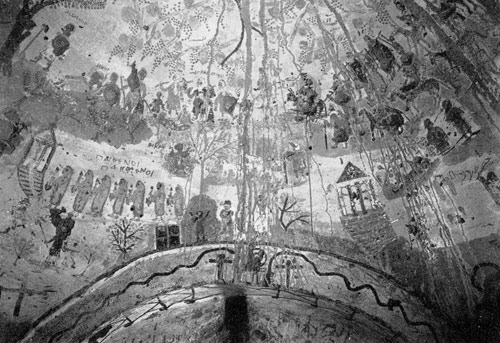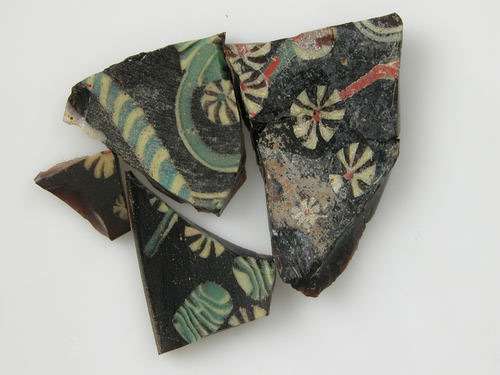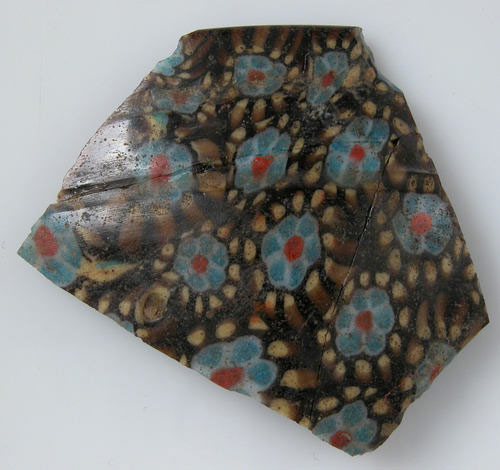 Traveling Exhibitions
Traveling Exhibitions Traveling Works of Art
Traveling Works of Art Conservation Projects
Conservation Projects Excavations
Excavations Fellows
Fellows Exchanges & Collaborations
Exchanges & Collaborations Multiple Items
Multiple Items
The Met Around the World presents the Met’s work via the global scope of its collection and as it extends across the nation and the world through a variety of domestic and international initiatives and programs, including exhibitions, excavations, fellowships, professional exchanges, conservation projects, and traveling works of art.
The Met Around the World is designed and maintained by the Office of the Director.
Traveling
Exhibitions
The Met organizes large and small exhibitions that travel beyond the Museum's walls, extending our scholarship to institutions across the world. See our national and international traveling exhibition program from 2009 to the present.
Traveling
Works of Art
The Met lends works of art to exhibitions and institutions worldwide to expose its collection to the broadest possible audience. See our current national and international loans program.
Conservation
Projects
The preservation of works of art is a fundamental part of the Met's mission. Our work in this area includes treating works of art from other collections. See our national and international conservation activities from 2009 to the present.
Excavations
The Met has conducted excavations for over 100 years in direct partnership with source countries at some of the most important archaeological sites in the world. Today we continue this tradition in order to gain greater understanding of our ancient collections. See our national and international excavation program from the Met's founding to the present.
Fellows
The Met hosts students, scholars, and museum professionals so that they can learn from our staff and pursue independent research in the context of the Met's exceptional resources and facilities. See the activities of our current national and international fellows.
Exchanges & Collaborations
The Met's work takes many forms, from participation in exchange programs at partnering institutions and worldwide symposia to advising on a range of museum issues. These activities contribute to our commitment to advancing the work of the larger, global community of art museums. See our national and international exchange program and other collaborations from 2009 to the present.
 The Christian cemetery of El-Bagawat. Photograph by Dieter Arnold, 2000.
The Christian cemetery of El-Bagawat. Photograph by Dieter Arnold, 2000. Tomb chapel decorated with biblical scenes. Photographer unknown, 1908.
Tomb chapel decorated with biblical scenes. Photographer unknown, 1908.
Glass Fragments from a Vessel (4)
200–400
Made in Egypt, Byzantine
Rogers Fund, 1908 (08.268.1a-d)


Glass Fragments from a Vessel (26)
200–400
Made in Egypt, Byzantine
Rogers Fund, 1908 (08.268.16a-aa)


Fragment of Mosaic Glass from a Vessel
200–400
Made in Egypt, Byzantine
Rogers Fund, 1908 (08.268.17a-k)

Egypt
1908
The Metropolitan Museum carried out only one season of excavations in the cemetery of El-Bagawat, but as complete a photographic record as possible was made of the decorated tomb chapels and other ruins scattered over the northern part of the Oasis. About twenty years later, Charles K. Wilkinson of the Egyptian Expedition's Graphic Section returned to the site and produced a number of color facsimiles of the decoration in several of the chapels.
The cemetery consists of about 200 brick chapels, partially arranged in "streets." The buildings are extraordinary well preserved and mainly show a square plan and are roofed with a dome on pendentives. A few chapels have a more elaborate ground plan. The exterior exhibits a mixture of pharaonic and classical architectural elements. The surfaces are plastered and in several cases painted, especially the interior of the cupolas. The paintings include allegorical and biblical personages and biblical scenes.
About 100 graves were excavated that produced pottery and personal items. A small mound near the cemetery, known as Ain et-Turba, was also excavated and this contained the ruins of houses that yielded ostraca, glassware, and coins dating from the reign of Constantine the Great to Arcadius (A.D. 324–408), thus giving a rough time frame for the occupation of the settlement. Some of the objects that came to the Museum in the division of finds are now on view in the Mary and Michael Jaharis Byzantine Egyptian gallery (302).

